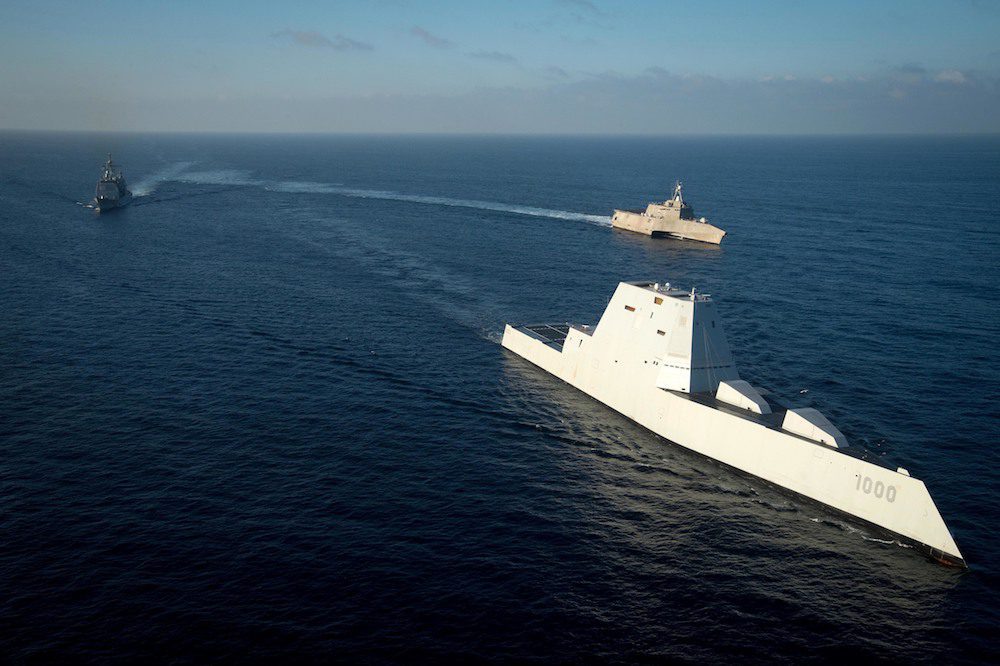The Navy’s most technologically advanced surface ship USS Zumwalt (DDG 1000), in formation with USS Independence (LCS 2) and USS Bunker Hill (CG 52). U.S. Navy Photo
U.S. Navy Secretary Ray Mabus said Friday the U.S. Navy needs a fleet of 355 ships to protect America and its interests around the world.
The need for the larger fleet was announced today at the Pentagon with the release of the Navy’s 2016 Force Structure Assessment (FSA), a year-long effort beginning last January to evaluate long-term defense security requirements for future naval forces.
The 2016 FSA recommends a 355-ship fleet including 12 carriers, 104 large surface combatants, 52 small surface combatants, 38 amphibious ships, and 66 submarines.
The number is even more ambitious than the 350-ship fleet President-elect Donald Trump has called for.
While the 2016 FSA was not constrained by budget control act funding levels, the Navy says its leadership is confident that, if funded, the plan is executable. In fact each ship class called for in the FSA already “has an active shipbuilding line already up and running,” the Navy said.
The findings of the 2016 FSA will taken into account for the Navy’s FY-2018 30-year shipbuilding plan. The Navy says its current proposed budget is seen as a bridge to this larger Navy, with shipbuilding on an upward glide slope towards its current goal of 308 ships.
“To continue to protect America and defend our strategic interests around the world, all while continuing the counter terrorism fight and appropriately competing with a growing China and resurgent Russia, our Navy must continue to grow,” said Secretary of the Navy Ray Mabus. “All of the analysis done to date, inside and outside of the Navy, recognizes, as we have for nearly the last eight years, the need for a larger Fleet. That is why, working with Congress and our partners in industry, we have successfully reversed the decline in shipbuilding that occurred from 2001-2009, putting 86 ships under contract over the last seven years. Maintaining this momentum, and the cost-saving business practices we have established, will be critical to ensuring the Navy is able to achieve the FSA-recommended fleet size and is positioned to maintain the global presence the Navy and Marine Corps uniquely provide our nation.”
There are currently 273 deployable ships in the U.S. Navy, according to the Navy’s website.
Earlier this week, the Shipbuilders Council of America, representing the U.S. shipbuilders and repair yards, said the industry is ready to work with President-elect Trump to help realize his 350-ship goal.
A statement from SCA President, Matthew Paxton, following Friday’s release of the Navy FSA said:
“The Shipbuilders Council of America (SCA) strongly endorses the Navy’s new Force Structure Assessment that calls for increasing the Fleet size to 355 ships, adding 47 ships to the current goal. A larger fleet will allow the Navy to provide forward presence of ready forces distributed globally to be where it matters, when it matters. And as the new Force Assessment recognizes, in order to begin the work of building a larger fleet, it is imperative Congress end sequestration. The U.S. shipyard industry stands ready to build this Fleet of the future that will ensure the continued flow of international commerce and the security of our nation.”

 Join The Club
Join The Club











